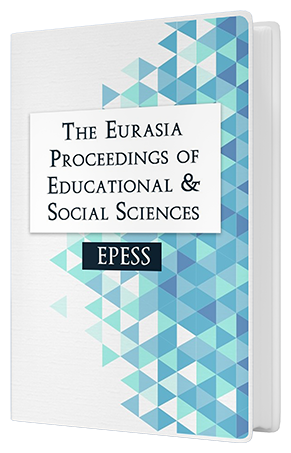MODEL OF STUDYING ELECTROMAGNETIC FIELD AND WAVES THEORY VIA COMPUTER SIMULATION
Keywords:
Electrodynamics, wave scattering, simulationAbstract
Model of studying the electromagnetic theory, mathematics, computing and data visualization in purpose to comprehend the main ideas of theories and practical applications are proposed. To learn physical processes and system’s properties by computer simulation and to learn simulation by solution of physical tasks is the concept of proposed model. Integrated course of electromagnetic (EM) field and wave theories, mathematical solution of equations, computing techniques based on solutions of well known tasks as well as current problems of applied electrodynamics are considered. Application examples of electromagnetic in scientific research, modern technologies represent the abstract theories in realistic existence, help to understand deeply theoretical course, appreciate significance of (EM) theories in many fields of daily life. Knowledge of main theories of electromagnetic combined with mathematics and computing is necessary for solving the electrodynamics problems such as (EM) waves scattering and diffraction, interaction of (EM) field and objects of different electric and geometric properties, basis of linear and nonlinear optical techniques, etc. Selected tasks of electrodynamics are constructed of several modules: formulation of physical problem, theories and methods of solution – physical and mathematical, specifics of problem, approximation and application cases, computer simulation, analysis. Each completed module expands outlook, develops skills, intuition, self-confidence, encourages participants be more motivated, active in learning and improvement of knowledge in multi disciplines. Proposed model is presented by considering one task - EM waves scattering on a single cylindrical body, applicable in radio physics, transmitting and detecting systems, aerosol studies for particles of different origin. Estimation of EM field components, scattering characteristics, theoretical predictions based on analytical solutions and numerical simulations are considered.Downloads
Published
How to Cite
Issue
Section
License
Copyright (c) 2016 The Eurasia Proceedings of Educational and Social Sciences

This work is licensed under a Creative Commons Attribution-NonCommercial-ShareAlike 4.0 International License.
The articles may be used for research, teaching, and private study purposes. Any substantial or systematic reproduction, redistribution, reselling, loan, sub-licensing, systematic supply, or distribution in any form to anyone is expressly forbidden. Authors alone are responsible for the contents of their articles. The journal owns the copyright of the articles. The publisher shall not be liable for any loss, actions, claims, proceedings, demand, or costs or damages whatsoever or howsoever caused arising directly or indirectly in connection with or arising out of the use of the research material. All authors are requested to disclose any actual or potential conflict of interest including any financial, personal or other relationships with other people or organizations regarding the submitted work.




